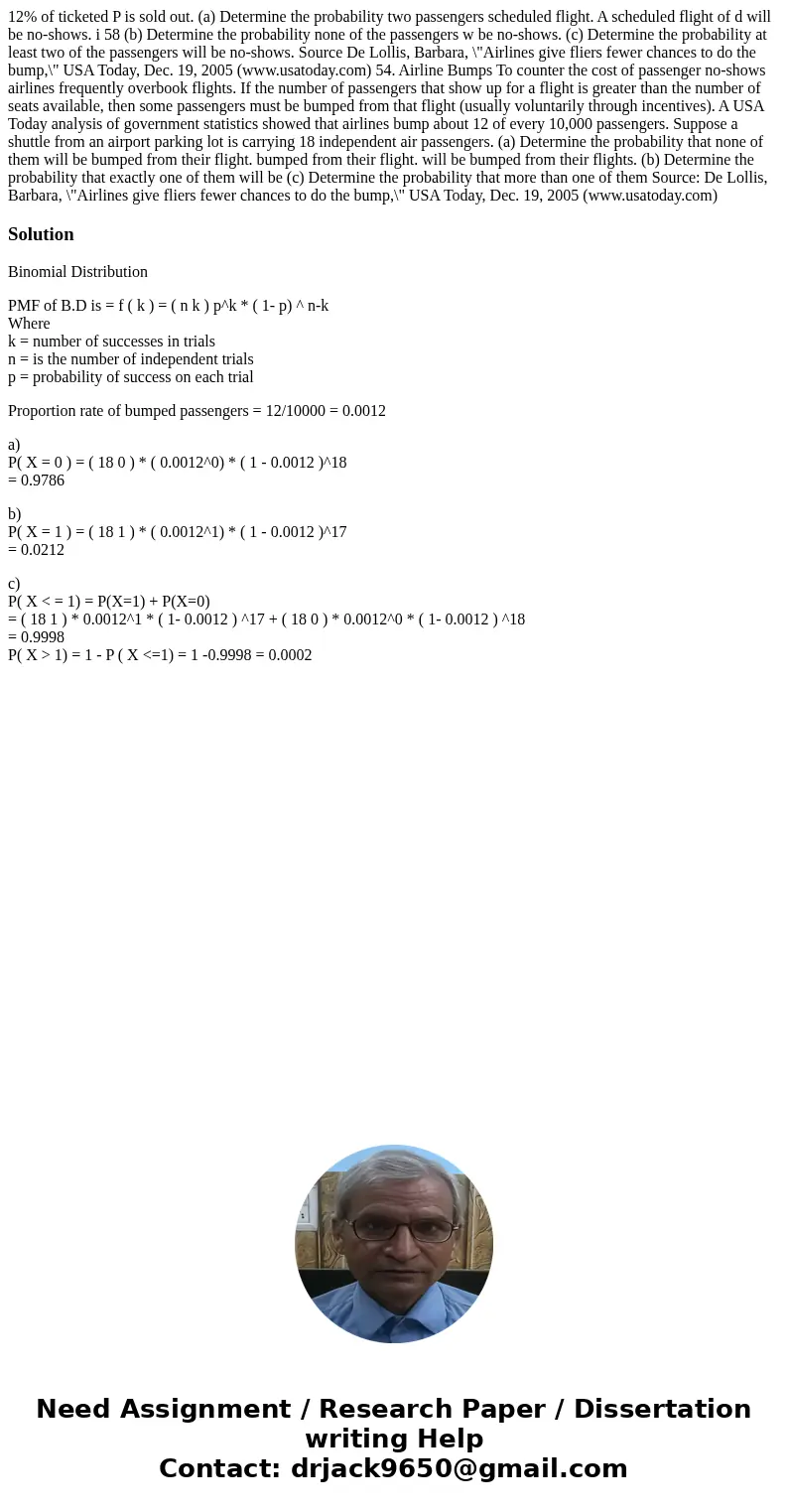12 of ticketed P is sold out a Determine the probability two
12% of ticketed P is sold out. (a) Determine the probability two passengers scheduled flight. A scheduled flight of d will be no-shows. i 58 (b) Determine the probability none of the passengers w be no-shows. (c) Determine the probability at least two of the passengers will be no-shows. Source De Lollis, Barbara, \"Airlines give fliers fewer chances to do the bump,\" USA Today, Dec. 19, 2005 (www.usatoday.com) 54. Airline Bumps To counter the cost of passenger no-shows airlines frequently overbook flights. If the number of passengers that show up for a flight is greater than the number of seats available, then some passengers must be bumped from that flight (usually voluntarily through incentives). A USA Today analysis of government statistics showed that airlines bump about 12 of every 10,000 passengers. Suppose a shuttle from an airport parking lot is carrying 18 independent air passengers. (a) Determine the probability that none of them will be bumped from their flight. bumped from their flight. will be bumped from their flights. (b) Determine the probability that exactly one of them will be (c) Determine the probability that more than one of them Source: De Lollis, Barbara, \"Airlines give fliers fewer chances to do the bump,\" USA Today, Dec. 19, 2005 (www.usatoday.com) 
Solution
Binomial Distribution
PMF of B.D is = f ( k ) = ( n k ) p^k * ( 1- p) ^ n-k
Where
k = number of successes in trials
n = is the number of independent trials
p = probability of success on each trial
Proportion rate of bumped passengers = 12/10000 = 0.0012
a)
P( X = 0 ) = ( 18 0 ) * ( 0.0012^0) * ( 1 - 0.0012 )^18
= 0.9786
b)
P( X = 1 ) = ( 18 1 ) * ( 0.0012^1) * ( 1 - 0.0012 )^17
= 0.0212
c)
P( X < = 1) = P(X=1) + P(X=0)
= ( 18 1 ) * 0.0012^1 * ( 1- 0.0012 ) ^17 + ( 18 0 ) * 0.0012^0 * ( 1- 0.0012 ) ^18
= 0.9998
P( X > 1) = 1 - P ( X <=1) = 1 -0.9998 = 0.0002

 Homework Sourse
Homework Sourse